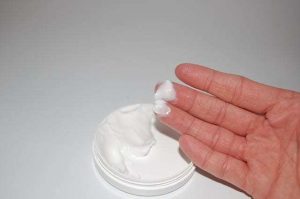Bee Loved was approached recently for advice on skincare after radiation therapy. Mary’s* skin had become excessively dry and damaged during the course of her treatment while the intense itching was making her miserable. Standard body lotions didn’t seem to be working – even intensive treatments designed for dry skin – and she was at her wit’s end trying to find a solution.
Dry and damaged skin caused by radiation therapy is known as radiation dermatitis and is a common side effect of the cancer treatment. Radiation kills healthy tissue alongside cancer cells creating damage to the skin that can result in a rash or itchy, peeling or flaking skin through to more painful conditions that include blisters and raw, peeling skin.
What Mary didn’t realise was that despite her best efforts, her wider skincare routine was only compounding her dry skin problem. She loved the scent of her daily body wash and the way it would lather profusely. After her shower she would slather her dry skin in thick creams and spray her wrists, neck and décolletage with her favourite perfume. The downside of her skincare routine was the chemical ingredients in her favourite products; not only were they known to strip skin of its natural oils, they were reported to cause skin reactions and irritation, hormone disruption and be linked to certain cancers.
Among the key ingredients dry and problem skin sufferers should watch out for include paraffin, petrolatum, petroleum jelly, mineral oil, Sodium Laurel Sulfate, fragrance or parfum, paraben, dibutylphthalate (DBP, DEP or butyl ester), synthetic colours, perfume or those that end in glycol.
The effects of these ingredients can vary from mild to severe. For example, petroleum based products are popular for treating dry skin and to create barriers are known to inhibit the skin’s ability to breathe and regulate its own moisture. While the initial effect may create a soft skin feeling, the long term effect can be drier, more irritated skin. Sodium Laurel Sulfate (SLS) is another ingredient to watch – and the key ingredient used in Mary’s body wash to create the lather she enjoyed so much. Unfortunately it is much more suited to degreasing trucks than cleansing the body and face. SLS is used widely in personal care products from shampoo to toothpaste and is known to cause skin irritation, is linked to hormone disruption and possibly even cancer. In children it is known to cause eye irritation and poor eye development. SLS has also been found in scientific studies to remain in the heart, brain and liver for up to 5 days after exposure.
Mary was advised to make a shift to non-toxic skincare products that use only natural ingredients to soothe and nourish the skin, while supporting the skin’s own ability to breathe, regulate its moisture and heal itself. She was also advised to avoid synthetic fragrances and perfumes.
To read more about toxic ingredients and the effect they have on the skin, click here.
If you have a question about skincare or a problem skin condition, why not email us?
*Name has been changed to protect the identity of the patient.
This post appeared first on the Bee Loved blog




